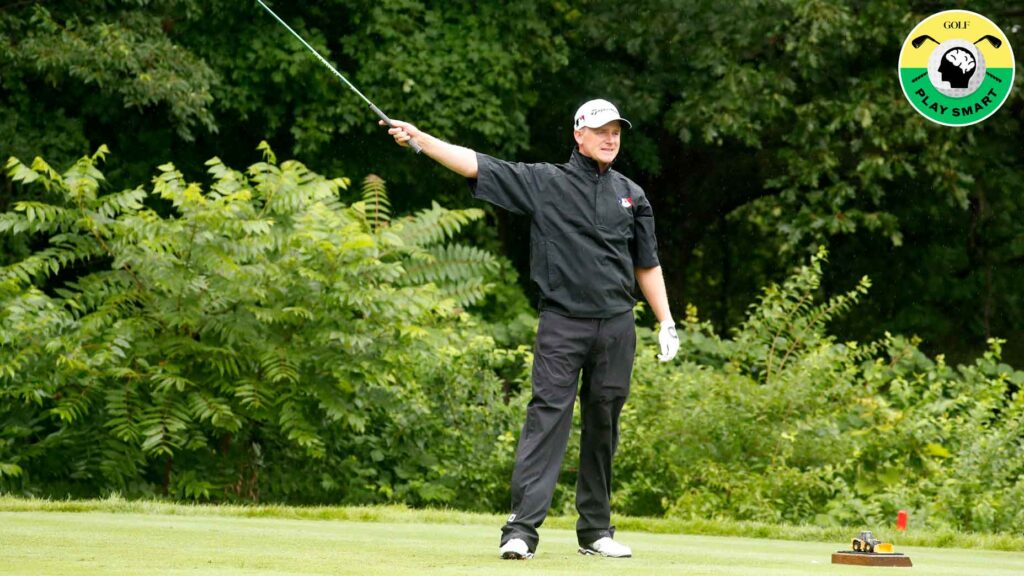Mastering the New Golf Rule: Overcoming Out of Bounds with Model Local Rule E-5
Introduction to GOLF.com’s Educational Series
Welcome to GOLF.com’s Play Smart, your go-to game-improvement column where we equip you with the tools and knowledge to enhance your golfing experience. Whether you’re a novice golfer or a seasoned player, understanding the evolving rules of golf can make a significant difference in your performance. One of the most frustrating experiences in golf is hitting a drive out of bounds. The moment that ball flies off the course, you may feel a wave of despair wash over you as you prepare to tee off again, with the fear of repeating the mistake hanging over your head.
Understanding the Classic Challenges of Out of Bounds
Hitting a ball out of bounds is undoubtedly one of the most disheartening moments in a golfer’s round. As you watch your ball drift away from your target, the immediate reality sets in: you must regroup and hit again, potentially from the same uncomfortable location. Previously, under the older rules, this meant incurring a stroke-and-distance penalty, resulting in yet another shot from the tee. This can be mentally taxing for many golfers, often leading to compounded mistakes and increased scores.
Transition to Modern Golf Rules
However, if you haven’t updated your knowledge since 2019, you might be missing out on a game-changing aspect of the Rules of Golf. Thanks to recent modifications, the golfing experience can be transformed when faced with an out-of-bounds situation. With the adoption of Model Local Rule E-5, players now have a more lenient option that encourages a faster pace of play and reduces the frustration associated with lost balls.
Old Rules and Their Limitations
Under the old rule, if your tee shot went out of bounds, golfers were forced to take a stroke-and-distance penalty. This meant heading back to the tee box for a third shot—a scenario that not only affects your scorecard but also tests your mental resilience. The repeated trips to the tee find golfers in endless cycles of frustration, which is far from the joyful experience that golf intends to offer.
Introduction to Model Local Rule E-5
The Model Local Rule E-5, implemented in 2019, represents a significant shift in how golfers can address errant shots. Instead of retreating to the tee, players have the opportunity to identify where their ball crossed out of bounds and drop it in the fairway, which is a markedly more favorable position. To use this rule, a golfer needs to draw an imaginary line perpendicular to the fairway from the point where the ball crossed out of bounds, with the drop zone designated as within two club lengths behind that line. This means that following a poor tee shot, you can play your fourth shot from a much more advantageous position in the fairway.
The Rationale Behind the Rule Change
This rule owes its existence to a desire to enhance the speed of play in golf. Many golfers have experienced frustrating delays when faced with a lost ball, especially in busy rounds. According to the United States Golf Association (USGA), issues with pace often arise when players are forced to return to the last point of play for out-of-bounds balls. By introducing E-5, these delays are minimized, allowing players to carry on playing rather than being burdened by penalties that disrupt the pace.
When to Utilize Model Local Rule E-5
So, when should you consider utilizing Model Local Rule E-5? It’s particularly beneficial for those struggling with consistency off the tee, helping you maintain a sense of control and enjoy the game without the anxiety of errant shots. Instead of feeling rattled by repeated mistakes, you have a practical solution that keeps you in the fairway—the heart of the game. This tactic not only enhances your pace of play but can also make your overall golfing experience more enjoyable by limiting the time spent searching for lost golf balls.
Visual Aids and Resources
To further explain the details of Model Local Rule E-5, visual resources can be instrumental. Many golf organizations have generated infographics to display the step-by-step process for properly implementing this local rule. These can often be found on golfing websites, including GOLF.com, and provide a clear understanding of how to effectively utilize the new regulations.
Conclusion: Embracing a Positive Mindset in Golf
In conclusion, adapting to the new rules can significantly impact your thought process and overall golf experience. Rather than feeling helpless after hitting an out-of-bounds shot, Model Local Rule E-5 empowers golfers with new strategies to maintain their performance and decrease stress on the course. By understanding these regulations and implementing them effectively, you’ll not only enhance your game but also cultivate a more positive and enjoyable golfing mindset. Be sure to keep up with evolving golf policies and share this information with fellow golfers to promote an enriching game for all.
With the right knowledge, any golfer can navigate the course with confidence and skill, turning potential mishaps into opportunities for improvement. Embrace the changes, and watch your game transform!


